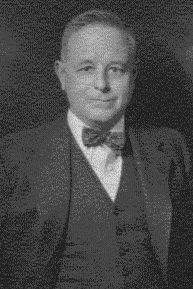Nationality American | Name Lowell Reed | |
 | ||
Doctoral students Joseph BerksonMorton KramerJacob Yerushalmy Alma mater | ||
Lowell reed what is epidemic theory part 3
Lowell Jacob Reed (January 8, 1886 – April 29, 1966) was 7th president of the Johns Hopkins University in Baltimore, Maryland. He was born in Berlin, New Hampshire, the son of Jason Reed, a millwright and farmer, and Louella Coffin Reed.
Contents
- Lowell reed what is epidemic theory part 3
- Lowell reed what is epidemic theory part 1
- Selected publications
- References
He had a long career as a research scientist in biostatistics and public health administration at Hopkins, where he was previously dean and director of the School of Public Health and later was vice president in charge of medical activities. He was an Invited Speaker at the ICM in 1924 in Toronto. In 1927 he was elected as a Fellow of the American Statistical Association. As a researcher, he developed a well known statistical technique for estimating the ED-50, and his work with epidemiologist Wade Hampton Frost on the Reed–Frost epidemic models also remains well known. He died in Berlin, New Hampshire, in 1966.
Lowell Reed attended the University of Maine, graduating in 1907 with a degree in electrical engineering. In 1915 he earned a PhD in mathematics at the University of Pennsylvania. This unusual combination of disciplines was put to use when he arrived at Johns Hopkins University in 1918, where he organized the Department of Biometry and Vital Statistics at the School of Hygiene and Public Health (now the Bloomberg School of Public Health) and was credited with coining the term "biostatistics". He became chair of that department in 1925 and, in 1947, was named vice president in charge of medical activities.
Reed retired from the Hopkins faculty in June 1953, only to be recalled later that summer to serve as president when Detlev Bronk departed for Rockefeller University. In September 1953, he returned to Baltimore from his home in New Hampshire to accept the presidency, stating, "For 30-odd years, I have had a glorious time at the Hopkins. I owed it to the people there to return." Although he made it clear that he did not plan to serve indefinitely, he did not regard himself as a caretaker or interim president. He oversaw the end of the Owen Lattimore espionage indictments (all charges were dropped in 1955), and new construction on the various Hopkins campuses, while still keeping a hand in biostatistics.
Reed retired for the second and final time in 1956, succeeded as president by Milton S. Eisenhower. Returning to his beloved New Hampshire farm, he again took up his hobbies of woodworking, painting, hiking and camping, and enjoyed an active retirement until his death in 1966. Reed Hall, a residence hall for medical school students and house staff on the Johns Hopkins medical campus, was named in his honor in 1962.
